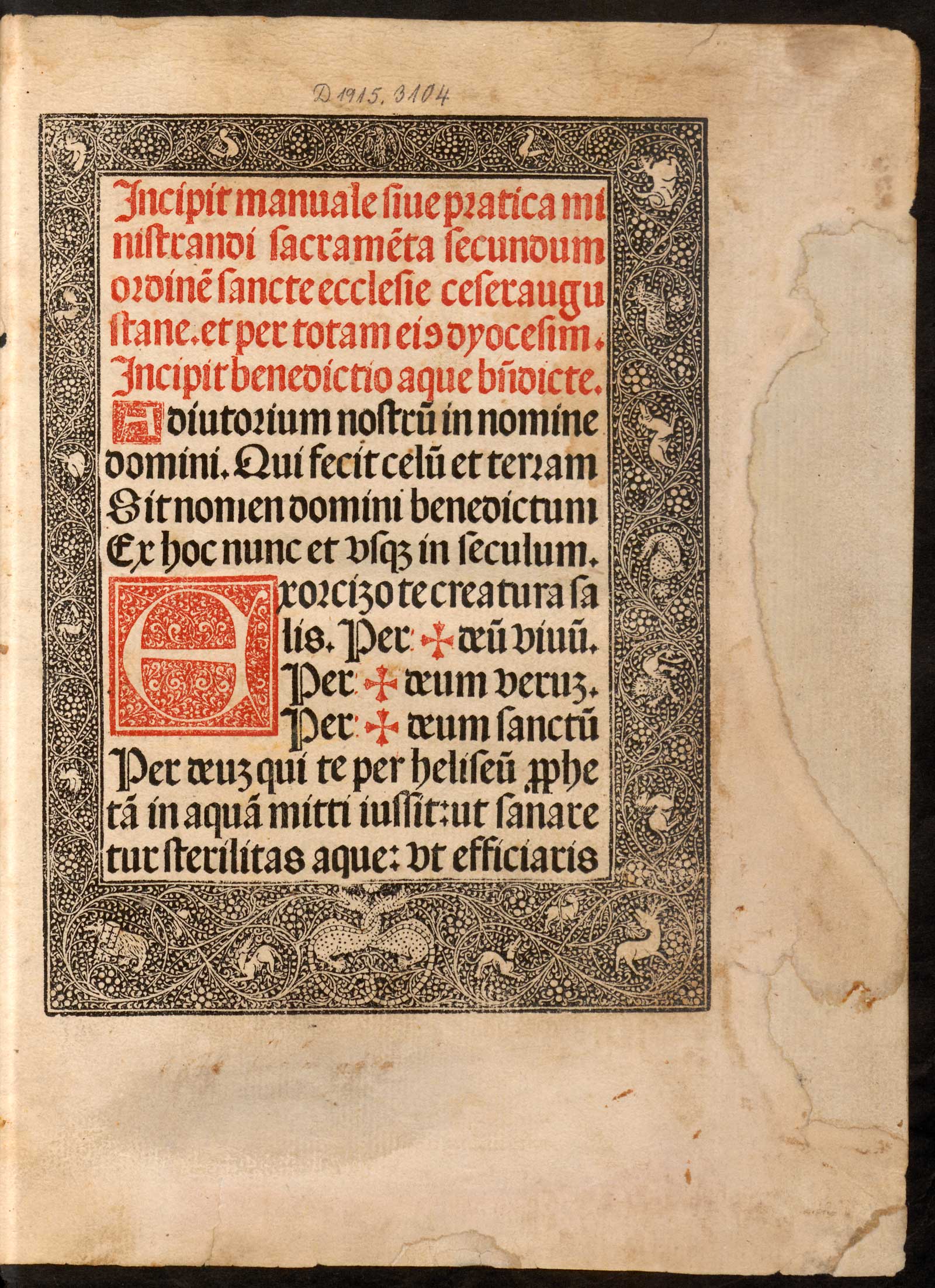Many of the first printed books in Europe were decorated with illustrations, initials and borders. Each served a purpose: initials signaled, via their range of sizes, a textual hierarchy, working in much the same way as chapter headings and sub-headings do today. Decorative borders were employed to demarcate or divide books, chapters or sections and, from the last decades of the fifteenth century, were used at the beginning of books as openers or title-pages.
Wood was by far the most common material for these decorative elements and had been in use long before the invention of movable type in the late 1440s. Most of the decorated borders in early typographic books are printed from woodcuts. Carving a design in wood was relatively inexpensive and could be produced pretty quickly. The woodblock would then be printed alongside the metal type (unlike etchings or other intaglio* methods that required a different kind of printing press) and could survive thousands or even tens of thousands of impressions before requiring repair or replacement.
Although woodcut borders are not uncommon in incunabula (fifteenth-century printed books), metalcut borders are. Here is a rare and beautiful metalcut border appearing first in a Church manual for the diocese of Zaragoza in Northern Spain. The border was made by Alfonso Fernández de Córdoba, printing in Híjar about 80km from Zaragoza. This delicate and busy moresque border populated with dogs, birds, a stag, entwined dragons, a unicorn, a lion, a bull, and some other creatures I’m unable to identify – all set against a background of tendrils, curlicues and white dots.

That Alfonso Fernández was, in addition to being an accomplished printer, a silversmith and thus well accustomed to engraving in metal, perhaps explains his choice of metal over wood. The very same metalcut border appeared again in c. 1487–8 in a Hebrew Torah, printed by Alantansi, also in Híjar; the border appears a third time in July 1489 in a commentary on the Torah, by Jewish scholar Moses ben Nahman and printed by Eliezer Toledano in Lisbon – the first book to be printed in the city. Moreover, despite heavy use, it shows no signs of the kind of wear typical of woodcuts, whose edges are especially prone to chipping and denting.

It is not always easy to tell if an early print is from a metal- or woodcut. To bring the metalcut to the same height as the type for printing, the thin metal plate was attached to a type-high plank of wood. Some surviving prints reveal the impressions of nail heads or white holes in the corners where nails have come loose and fallen out. In a larger print, subtle bending of lines indicate the use of metal where the metalcut has deformed in the printing press – a feature that does not appear in woodblock prints.

Another indication that a print is from a metalcut rather than a woodcut is the use of a white-dotted background. The shape of the dots – precisely formed circles, demonstrates that they have been formed with a hammer and metal punch. This method is known as ‘dotted manner‘, or manière criblée, from crible, the French for sieve.
Reference:
Print Culture and Peripheries in Early Modern Europe, edited by Benito Rial Costas.
The Late Medieval Hebrew Book in the Western Mediterranean, edited by Javier del Barco.
An Introduction to a History of the Woodcut by A. M. Hind.